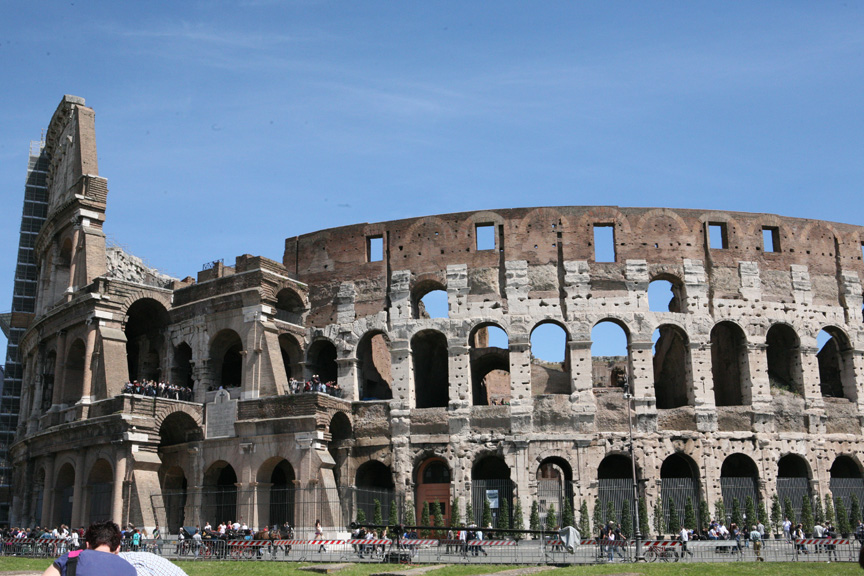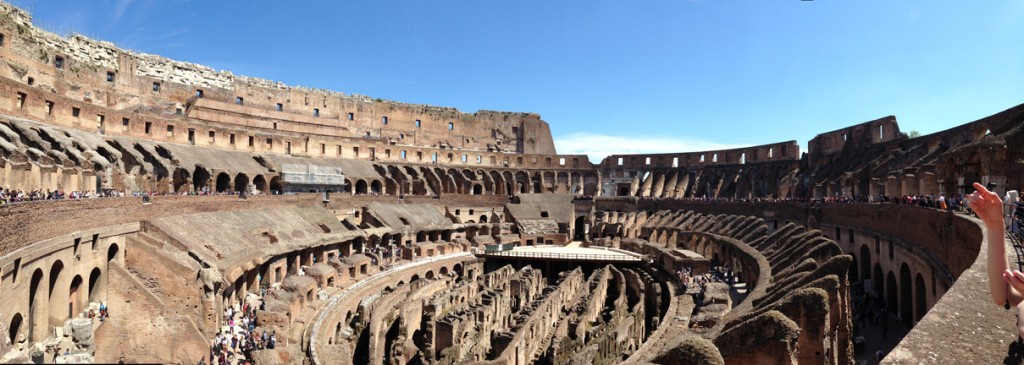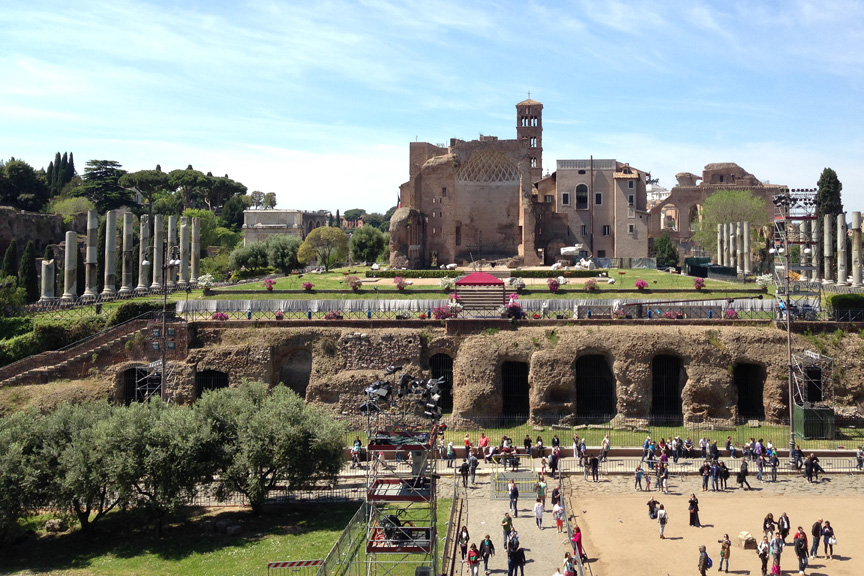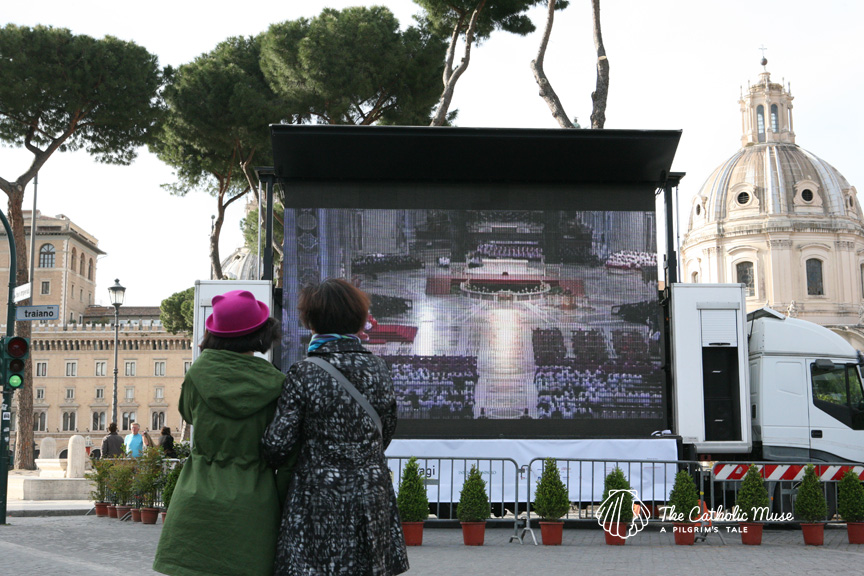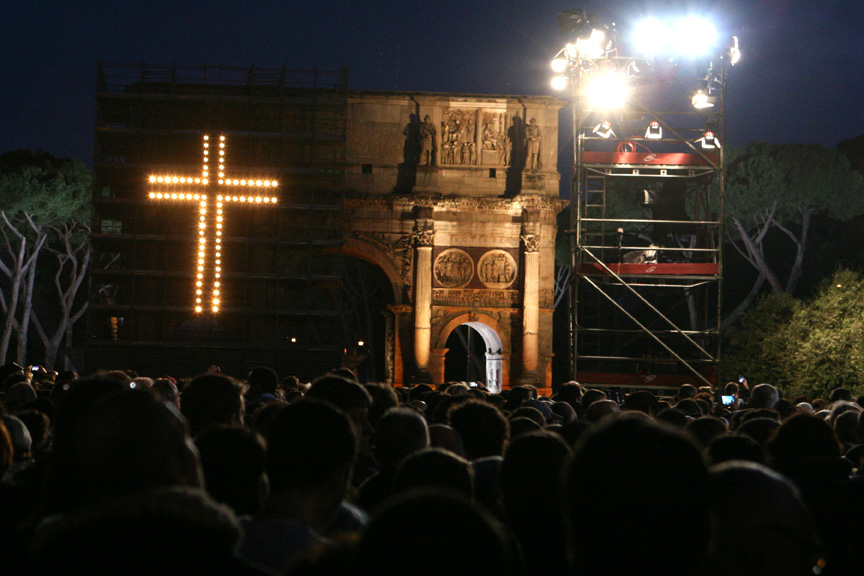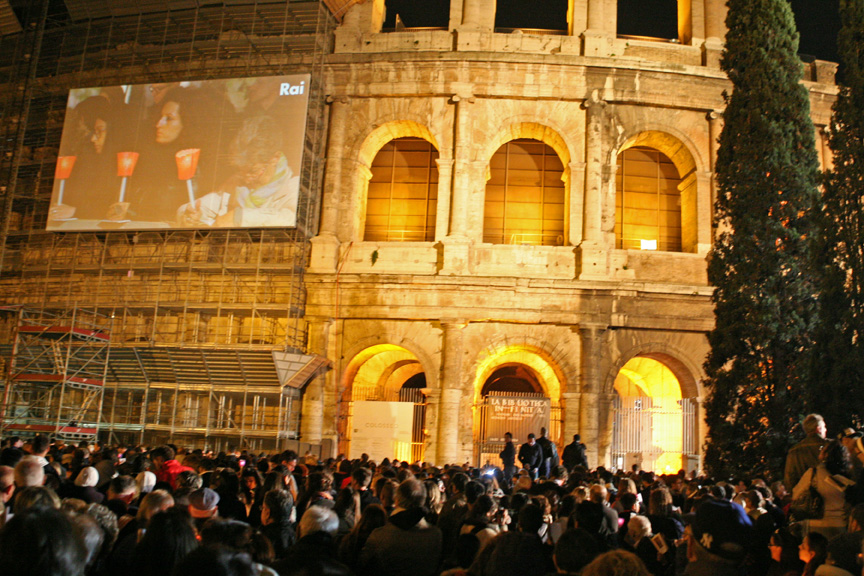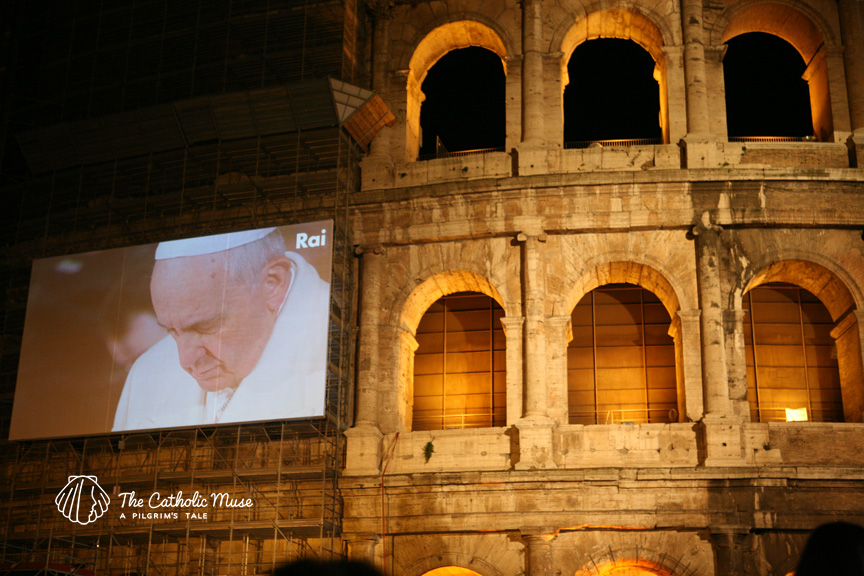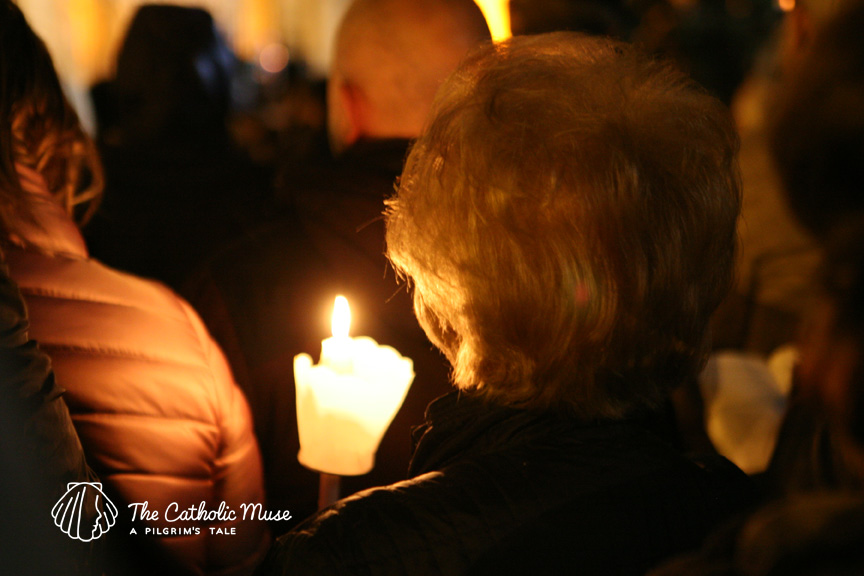I’m not really sure how it started. How I thought I wanted to visit the Colosseum on Good Friday. It felt like the Catholic answer to Mecca for me. Like I had to do it just once in my life, walk the Stations of the Cross at the Colosseum. It might have been the photos of the burning cross lighting up this colossal arena, or the tens of thousands of people who surrounded the Colosseum (not millions like Mecca) each year on this night. Whatever it was I was determined.
Rome’s metro system stops at the Colosseum where, as in the rest of Rome, you will be accosted by street venders and would-be ticket hawkers. Crossing the street, men donning head gear and chest plates swinging plastic swords caused me to pause a bit. This arena, though the facts and tradition may vary, is at best where humans and animals were hunted and killed for the spectator’s pleasure. At worst it is where Christians were thrown to wild beasts in a public display of entertainment and intimidation by Rome’s various Caesars.
The line forms inside and encircles the Colosseum spilling out into the daylight. Cobblestone walk ways cut a circular passage up steep wide stairways that lead to the look out to the arena floor. A singular cross stands as a symbol of all Christian martyrs.
It is said that St. Telemachus was visiting Rome and was so shock by what was occurring that he stepped into the arena and pleaded that it stop. The mob stoned him to death.
Outside the Colosseum and directly behind us, a new stage is being set. As evening sets on Rome the Pope will arrive to lead His flock in prayers and meditation on the Way of The Cross. The church once again displacing evil with good, leaving no room for its return because the King has set up residence here.
On this Good Friday the Via dei Fori Imperiali, one of Rome’s main arteries, is closed to vehicles making way for the tens of thousands of pilgrims that will stand together in evening prayer. The city waits and anticipates this great event, one that has been happening since the mid 18th century when Pope Benedict XIV declared the Colosseum a sacred site. Giant TV monitors are strategically placed along the city streets for viewing the cross as it is carried from station to station. In the distance we can hear the chanting of the afternoon prayer service in St. Peter’s square echoing across the chasm and bouncing off the ancient walls filling the Forum with prayer.
Evening comes, pilgrims arrive and the cross is lit.
Tens of thousands of the faithful fill the hollowed grounds and the city streets. The metro station is closed to filter the crowd in from another station.
The meditation begins.
“God placed on Jesus’ Cross all the weight of our sins, all the injustices perpetrated by every Cain against his brother, all the bitterness of the betrayal by Judas and by Peter, all the vanity of tyrants, all the arrogance of false friends. It was a heavy Cross, like night experienced by abandoned people, heavy like the death of loved ones, heavy because it carries all the ugliness of evil. However, the Cross is also glorious like the dawn after a long night, for it represents all the love of God, which is greater than our iniquities and our betrayals. In the Cross we see the monstrosity of man, when he allows evil to guide him; but we also see the immensity of the mercy of God, who does not treat us according to our sins but according to his mercy.”
By your cross Lord you have redeemed this.
Though great Cathedrals have been built and Catholicism has endured in Rome, the Colosseum remains her symbol – it stands as a reminder of both what man can accomplish and the evil he is capable of. It is a beautiful contradiction.

